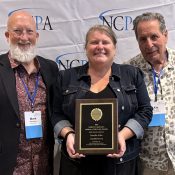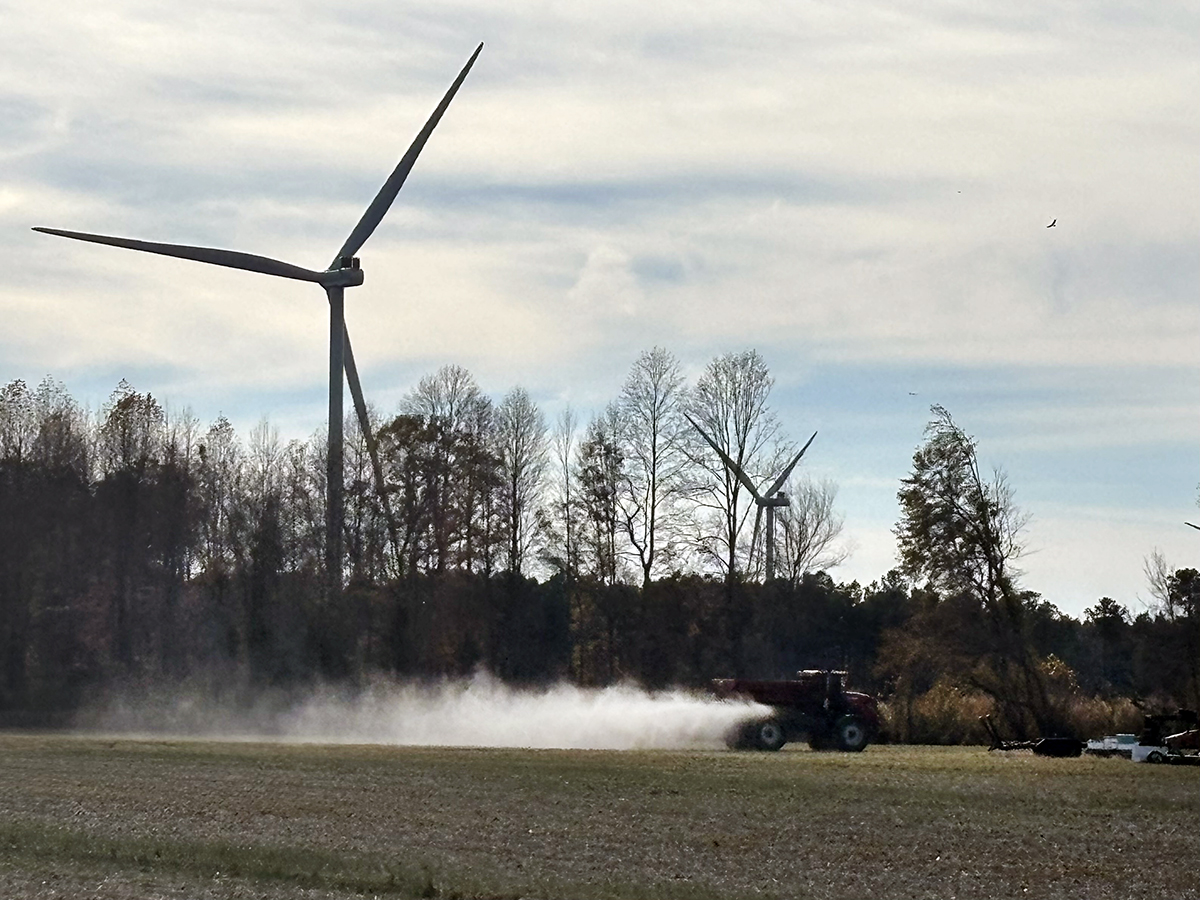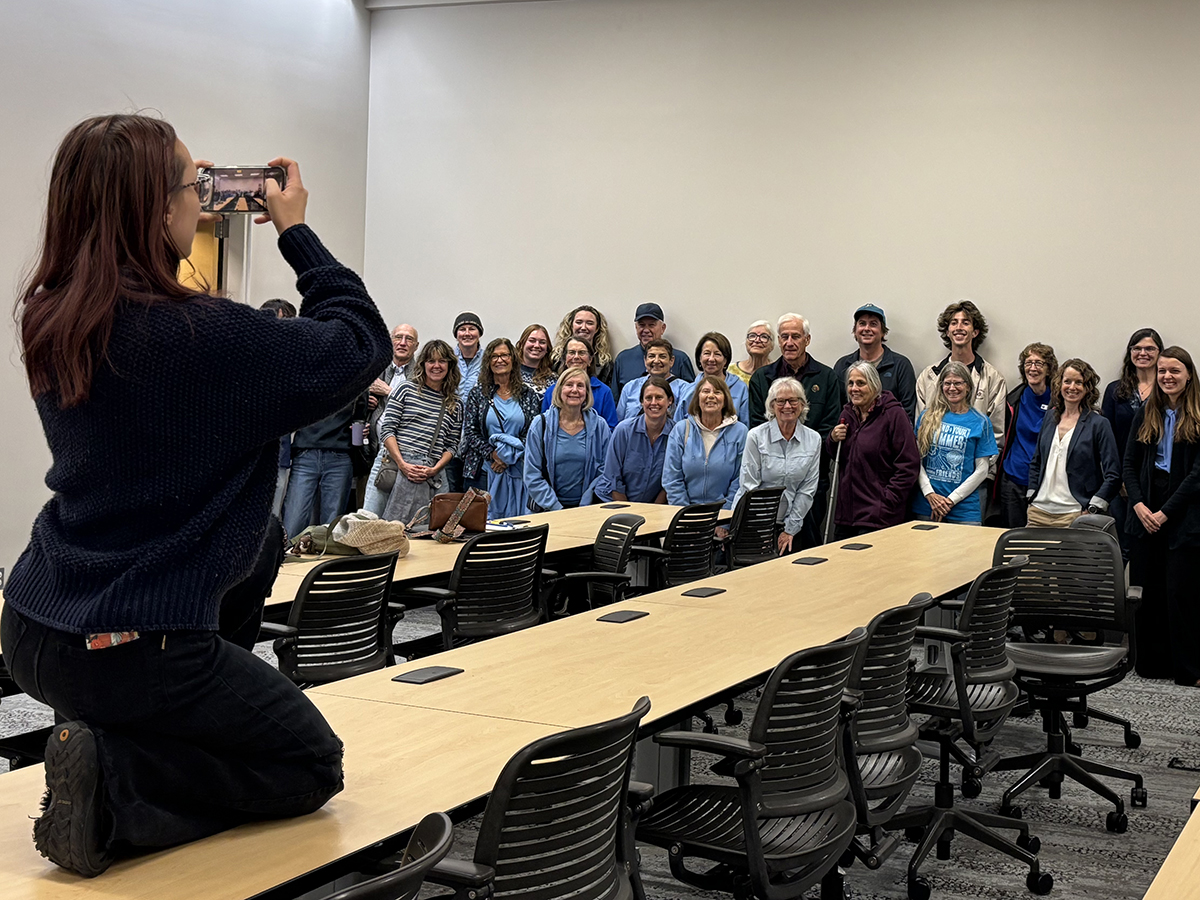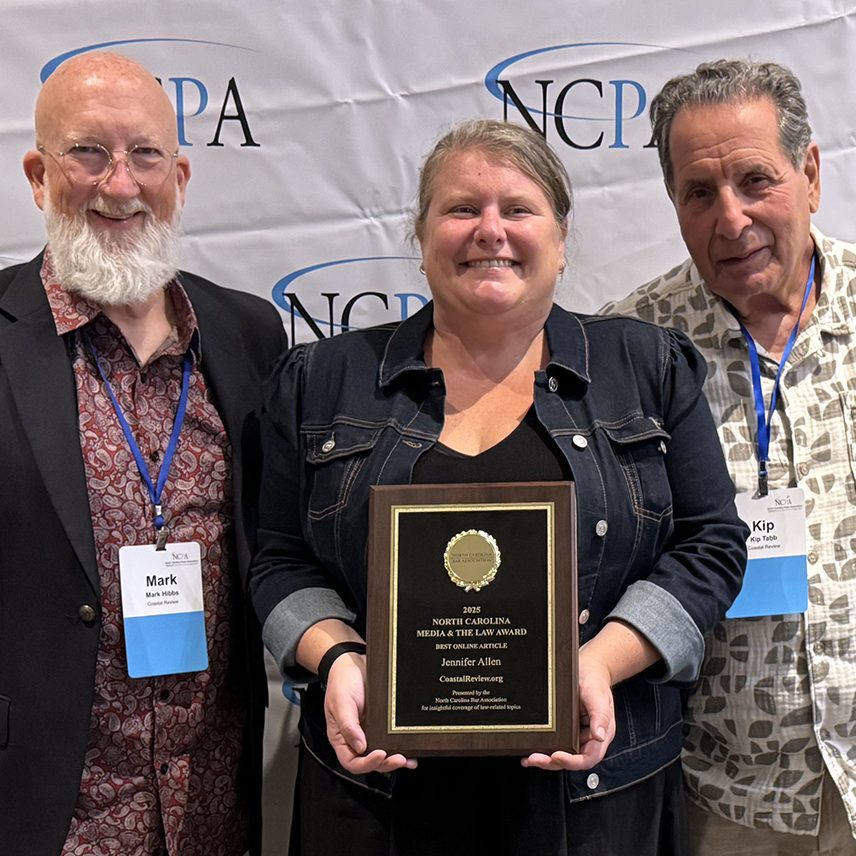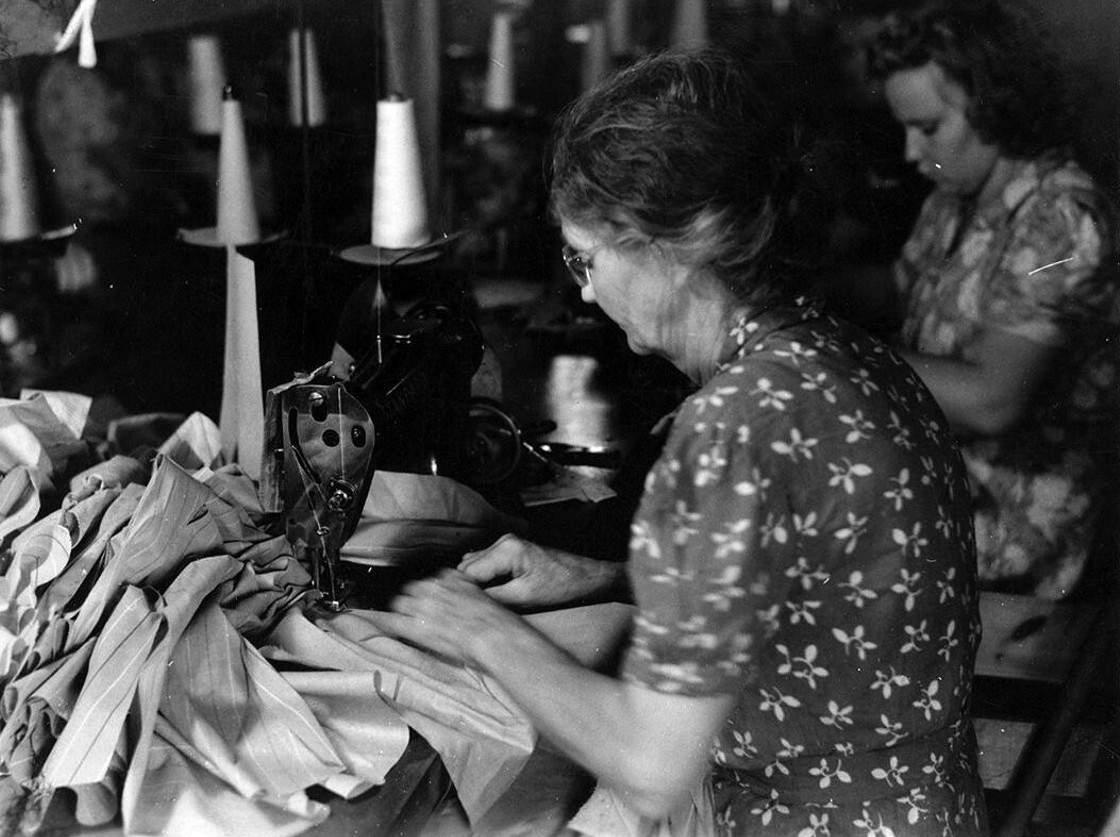
Editor’s note: The following is from historian David Cecelski’s “Working Lives: Photographs from Eastern North Carolina, 1937 to 1947.” The Carteret County native introduced the nearly 20-part photo-essay series earlier this year on his website, explaining at the time that the images he selected from the N.C. Department of Conservation and Development Collection were taken in the late 1930s into the early 1950s of the state’s farms, industries, and working people.
This is a photograph of Ms. Neva Adams at work in the stitching room at the Morehead City Garment Co. in Morehead City, 1942.
Supporter Spotlight
Chartered in the fall of 1938, the “Shirt Factory” was first located on the second floor of a brick building a block from Bogue Sound. At the time, the Great Depression still lingered. Hoping to attract a textile company, the town’s leaders had invested in the space, the machinery, and a training program for workers.
By the time of this photograph, the company, which was started by a couple from Pennsylvania, had moved to a new building across the railroad tracks. The original building was later home to the Webb Memorial Library in downtown Morehead City.
In a way, the company’s arrival in town was an historic event. The work was hard, the hours long and, in its early years, workers were rather scandalously not even paid the legal minimum wage.
Nonetheless, a job at the Shirt Factory offered a singular opportunity for hundreds of women just before, during, and after World War II. For many, it was their first chance to do what used to be called “public work,” a catch-all phrase for any job not in the home or on the farm.
They came from near and far to the Shirt Factory. Scores of women commuted in the back of farm trucks.
Supporter Spotlight
Others walked from the Promise Land, the neighborhood of largely fishing families that bordered the Shirt Factory.
Some women even caught rides on the school bus from Salter Path, a fishing village all the way out on Bogue Banks.
Neva Adams, in this photo, resided in Morehead City, probably in the Promise Land. She was already a grandmother when she started working at the Shirt Factory, but she had lost her husband just before the war and was on her own.
For women like her, the Shirt Factory often seemed a godsend. To a large part, that was because of the income, of course.
But over the years, when I have been talking to women who worked at the Shirt Factory back in those days, they have often told me how much it meant to them to be part of a community of women who laughed a lot, shared stories, and supported one another.
Being with those women, they would say, was a balm for grief and loneliness and all the hurts that happen in life.
–2–
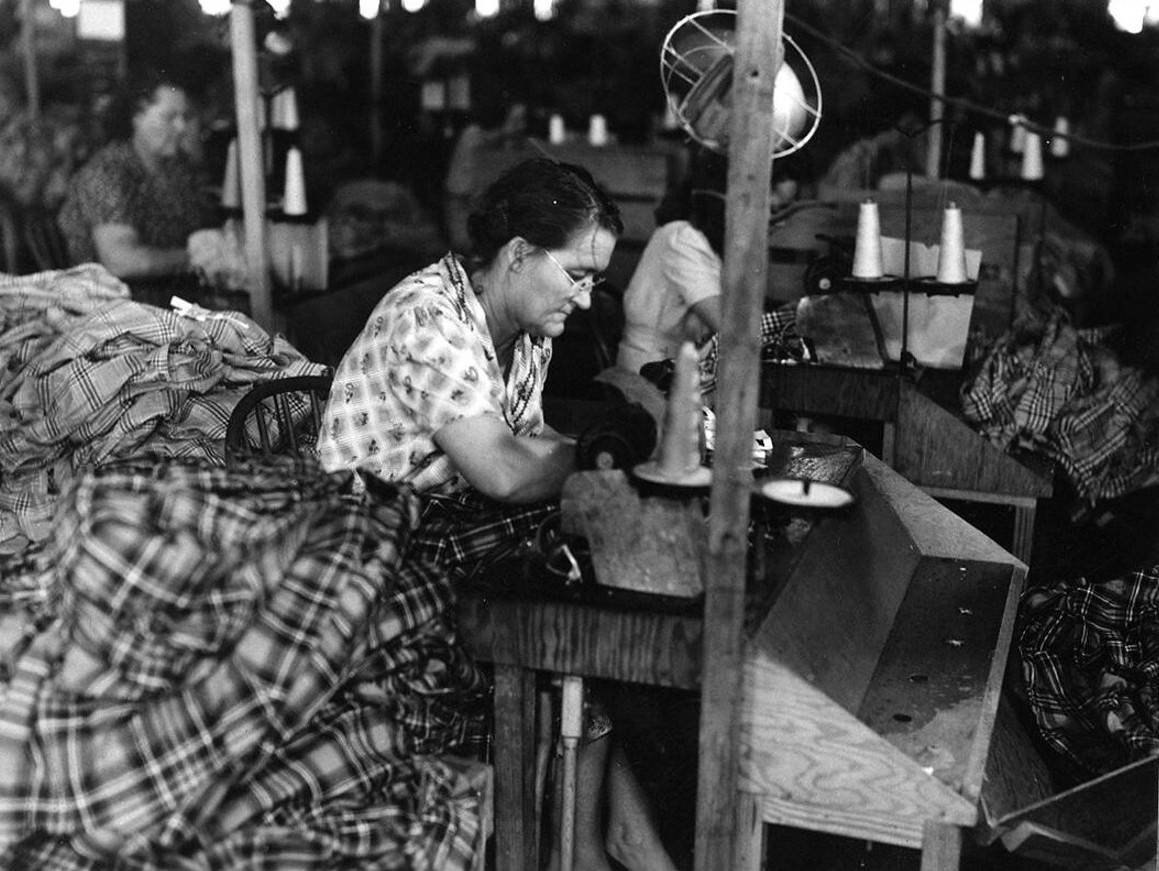
This is Ella Pittman, another of the Morehead City Garment Co.’s machine operators, at work in the stitching room in 1942.
Ms. Pittman was just the kind of woman that went to work at the Shirt Factory during the Second World War.
Born on Cedar Island in 1894, she had grown up in that remotest corner of the North Carolina coast long before bridges connected the local villages to the mainland.
Her father, Francis Marion Goodwin, was a fisherman all his life. A passel of Ms. Ella’s brothers, nephews, and cousins worked on the water as well– many of them on menhaden fishing boats.
Old timers still remember her brother, Capt. Leroy Goodwin, who was killed when a tugboat collided with his menhaden boat, the Barnegat, in 1960.
By the time that Ms. Pittman went to work at the Shirt Factory, she had come a long way in her life.
As a girl and young woman on Cedar Island, she had cooked on a wood stove or over a hearth. She had done laundry in a tin wash pot, salted barrels of fish every autumn, and had been unacquainted with electricity and indoor plumbing.
In all likelihood, she grew up helping her mother in a garden resplendent in collard greens, shallots, and sweet potatoes.
She was quite likely already well acquainted with needle and twine before coming to the Shirt Factory. Many a Cedar Island home had two hooks in the family’s kitchen walls, like the ones you might hang a hammock from, but they were put there for stitching fishing nets.
That way the women in the family could work on the family’s fishing nets In between their kitchen chores.
As a young woman, Ms. Ella married Luther Pittman, a Cedar Island fisherman. Like so many other Down East families in that day, they soon left their island home and moved into Beaufort.
When young Ella and Luther moved into town, they settled in Lennoxville, a community largely of fishing families that was actually a few miles east of Beaufort’s town limits.
Many years later, when Ella Pittman went to work at the Shirt Factory, she was probably in her 50s.
She was a mother of four, and she was likely the first woman in her extended family to do “public work” unless one of her daughters or nieces had gotten a wartime job at the Naval Section Base in Morehead City or at the big Marine Corps installation that was being built near Havelock.
The hours and working conditions at the Shirt Factory would seem grueling to many of us today.
However — and while I hate to make broad generalizations, I’m going to do it here anyway — a woman that grew up on Cedar Island in the early 1900s was used to hard work and long hours.
Even so, combining a daily shift at the Shirt Factory with a housewife’s duties could not have been easy.
Working at the Shirt Factory also posed challenges for many of those women that we might not consider today.
When I was younger, for instance, I often spoke with local women, including some of the women in my own family, who had gone from a fishing or farm life to a job at a factory or other public work during World War II.
For some, and especially older women workers, it took some getting used to, and some never did get used to it and did not last long.
Though accustomed to hard work, many said that it was a whole other thing to work by the clock, to be indoors all day, to do repetitive tasks day after day, and to have a boss with the power to tell them what to do, when to do it, when they could take breaks, and all the rest.
By all accounts, the Shirt Factory had a somewhat tumultuous first year.
Convicted on 25 counts of violating the Fair Labor Standards Act of 1938, including a failure to pay the minimum wage of 25 cents an hour, the company closed temporarily in May 1939. I am not sure how long the factory was idle, but the closure left more than 300 workers without a paycheck for a time.
Later in the 1940s, the company was also the scene of a bitter union drive.
During the union drive, the National Labor Relations Board ruled that the company’s owners had violated the National Labor Relations Act by firing pro-union activists and intimidating workers prior to the union election. A copy of the ruling is online.
-3-
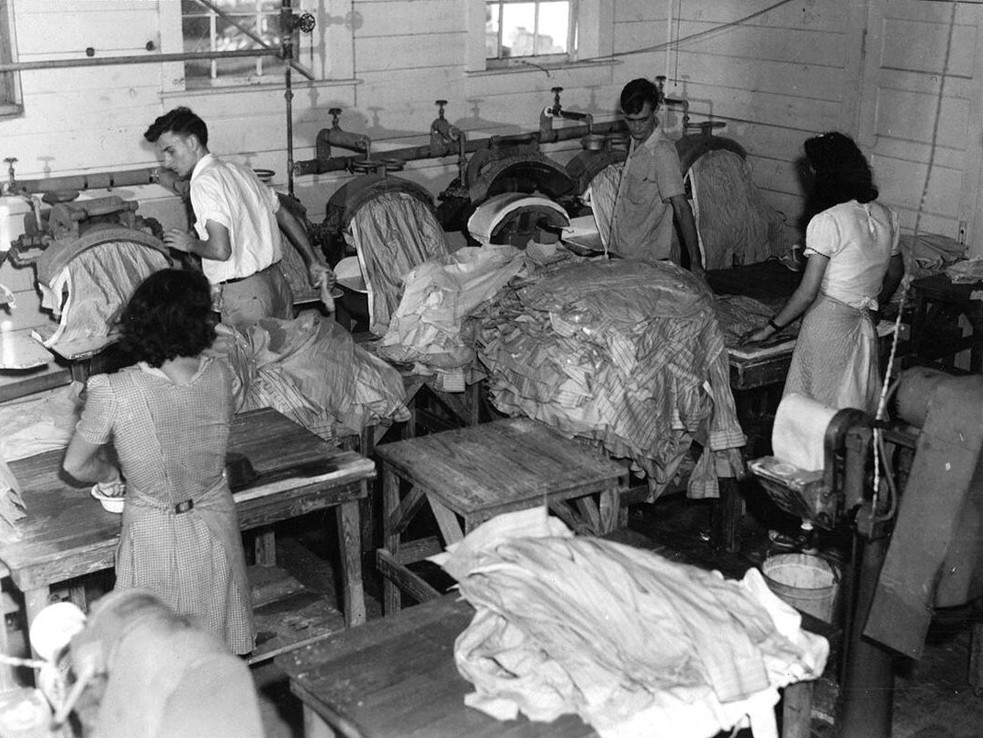
During the Second World War, a considerable part of the company’s production was for the United States Government, including in 1941, a $25,000 contract for military-issue khaki shirts, according to a March 15, 1914, report in the Asheville Times.
-4-
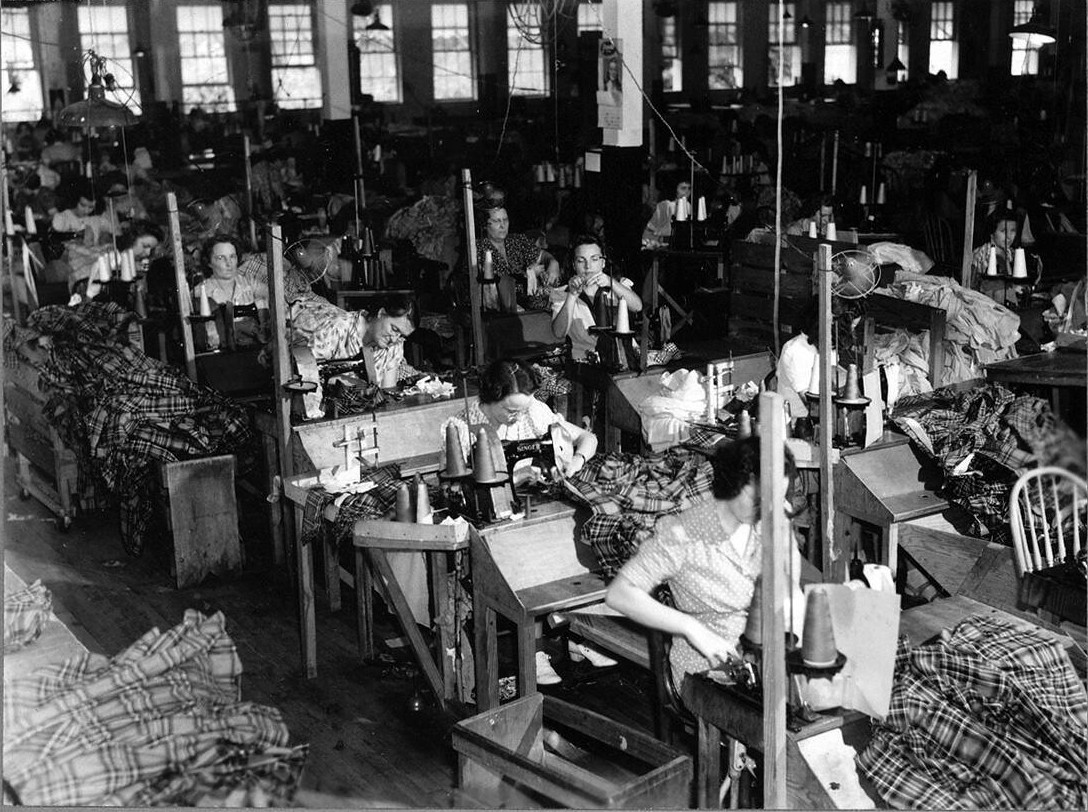
Here we get a more expansive view of the women in the company’s stitching room.
In my younger days, I had several elderly cousins and a great-uncle who had retired from long careers at the Shirt Factory.
I remember that when my cousins, all women, reminisced about their days at the Shirt Factory, they talked mainly about their friends there. They spoke of the feeling of sisterhood at the plant.
Long after they retired, they remained close to those women.
I did not get as much chance to be around my great-uncle Leo Simpson, and I don’t remember him speaking of the Shirt Factory, though he must have. He was married to my grandmother’s sister, Hilda.
However, I know that Great-Uncle Leo began working at the Shirt Factory in the late 1930s, soon after it first opened. For most of his career, he was the head of the factory’s cutting room.
My wonderful cousin Doug, one of Leo and Hilda’s sons, believes that his father likely met the company’s owners while he was helping to build the company’s new factory building in 1939 or ’40.
Doug was around the Shirt Factory from the time he was a small child. And when he got a little older, he had summer jobs there, before he went off and became a distinguished college professor and a leading authority on the great American educational philosopher John Dewey.
When I talked with Doug the other day, he recalled the company’s owners, Mr. and Mrs. Jackson, as being “kind, gracious people.”
He told me that Mrs. Jackson worked alongside her husband at the factory. She was, he said, a tall, imposing woman who always dressed very nicely.
Cousin Doug was not around her husband as much, but he did remember Mr. Jackson’s fierce anti-unionism.
On the other hand, he also recalled Mr. Jackson’s support for racial integration and his commitment to employing African Americans throughout the Shirt Factory. Such a policy was very out of keeping with the region’s other textile plants, and it was apparently controversial in Morehead City when first implemented at the Shirt Factory.
Judging from these photographs, the Shirt Factory had not yet opened its stitching room’s doors to Black women in 1942.
-5-
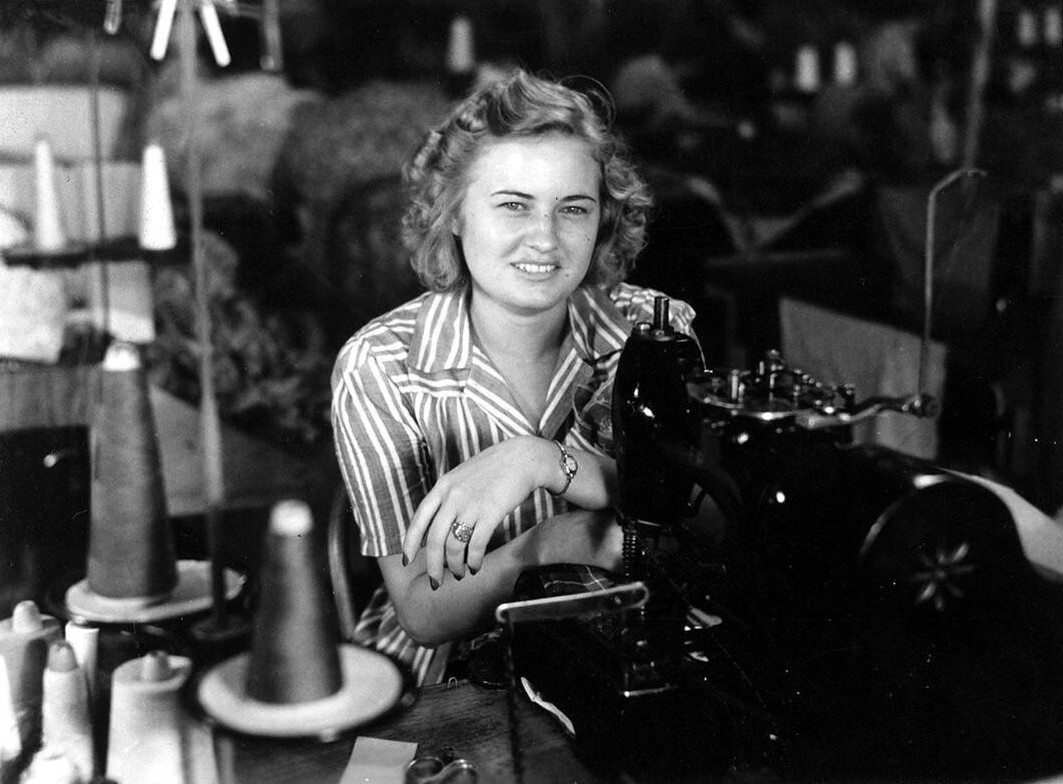
In this last photograph from the Shirt Factory’s stitching room, we meet an 18-year-old machine operator named Annie Grace Benton, about whom I also did a bit of research on her background.
I discovered that, in a way, young Ms. Benton represented another kind of woman that was drawn to wartime jobs such as those at the Shirt Factory.
According to my research, she had grown up on a farm in Seven Springs, a rural hamlet 90 miles west of Morehead City.
She had evidently just left home for the first time.
For many young women such as her, a job at the Shirt Factory meant a chance to help their families. Many a time, their wages might even have helped keep their family’s farm afloat or enabled a younger brother or sister to go to college.
For many of the young women, the Shirt Factory and other public jobs were also an opportunity to put the Great Depression behind them and to free themselves from the provincialism of farm life, and most especially from the limited roles for women that had historically existed in the farming communities of eastern North Carolina.
Military boom towns such as Morehead City were particularly exciting during World War II. The town was bustling with a Naval section base that operated there, and Army patrols were in and out constantly.
A busy USO and other local businesses catered to servicemen and women on leave from the many military installations, army outposts, and airfields that were being built on that part of the North Carolina coast in the early part of the war.
The largest were the Cherry Point Marine Corps Air Station, originally Cunningham Field, in Havelock and Marine Corps Base Camp Lejeune in Jacksonville.
Boardinghouses had sprung up all over Morehead City to cater to military wives and girlfriends, as well as to young farm women like Annie Grace Benton who were away from home for the first time.
Wherever Ms. Benton lived in Morehead City, probably in a boardinghouse, she was also around legions of other young women who had moved from other parts of the country to fill jobs at Cherry Point.
Those women were no ordinary lot either. At Cherry Point, they ranged from aircraft painters to flight instructors, jobs for which women, because so many men were overseas, were welcome for the first time.
Not only did many farm women, including, presumably Ms. Benton, welcome the financial independence offered by that kind of “public work,” but many also relished the liberty of being someplace where everyone did not know them, and the excitement of being liberated, however briefly, from the old mores — economic, social, and sexual — that governed women’s lives back home.
-End-


